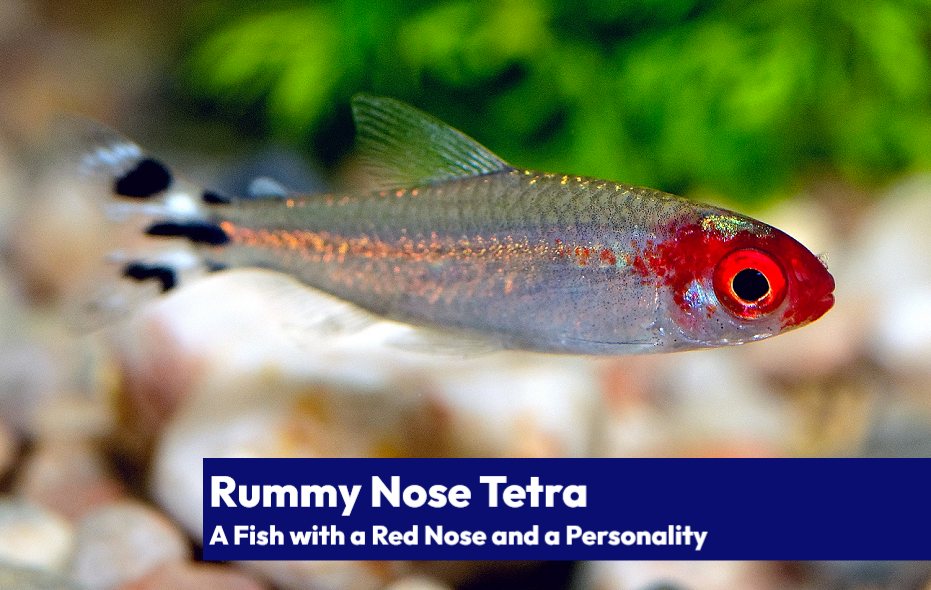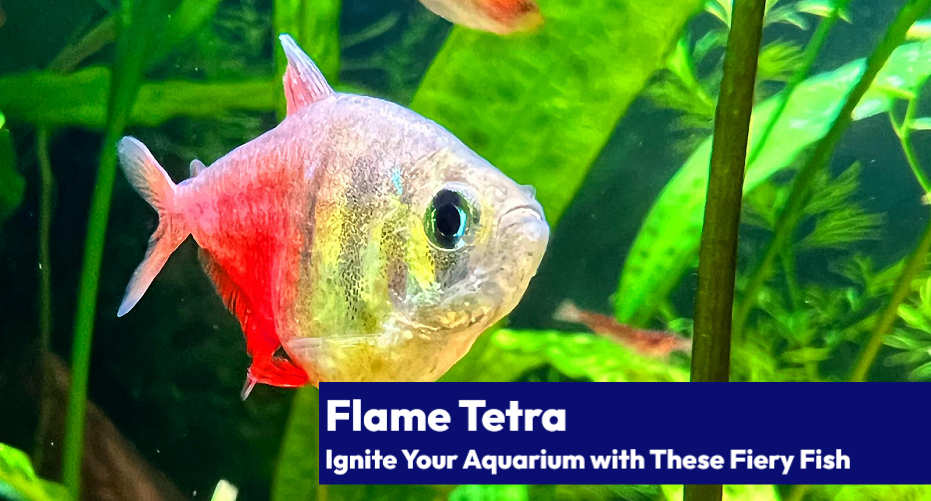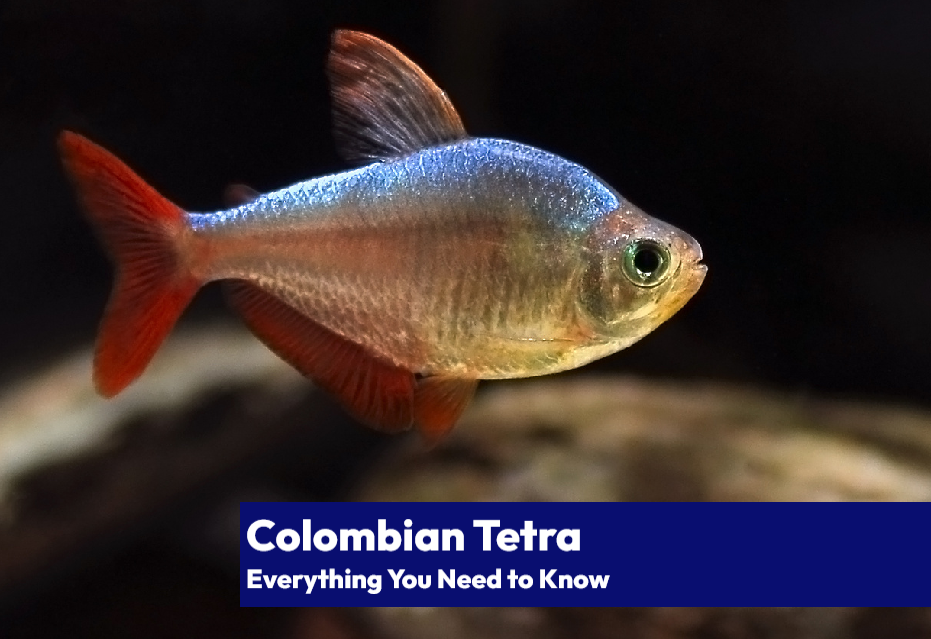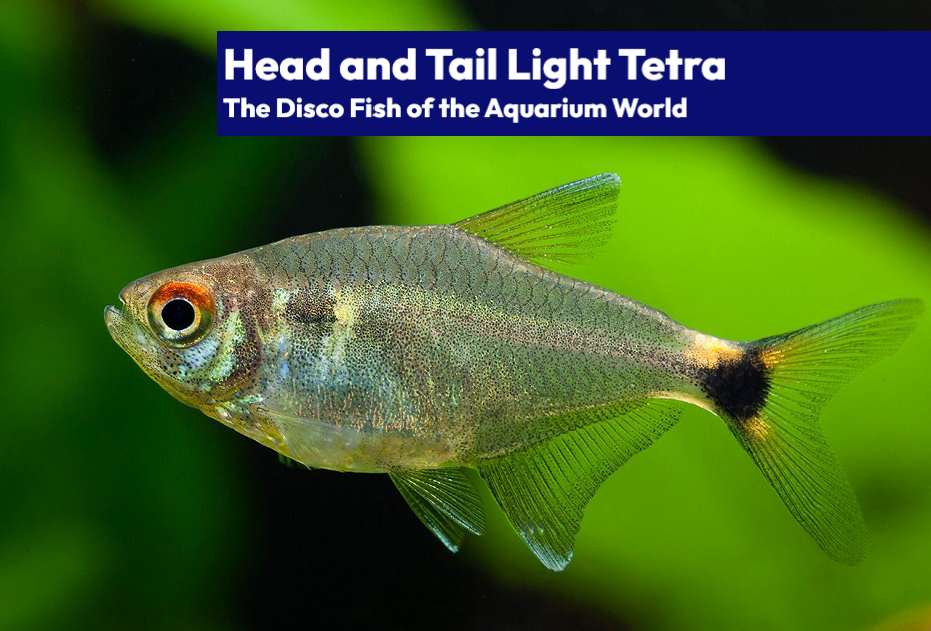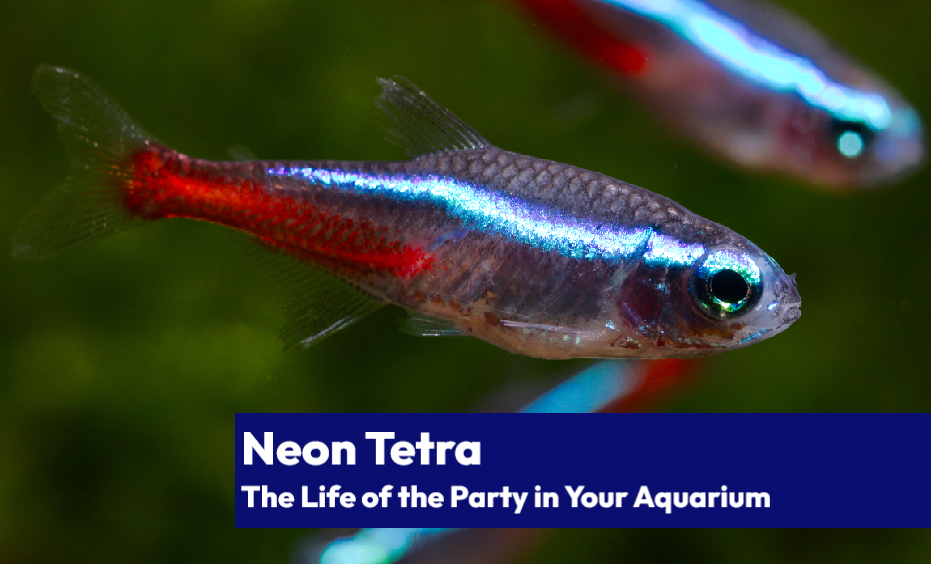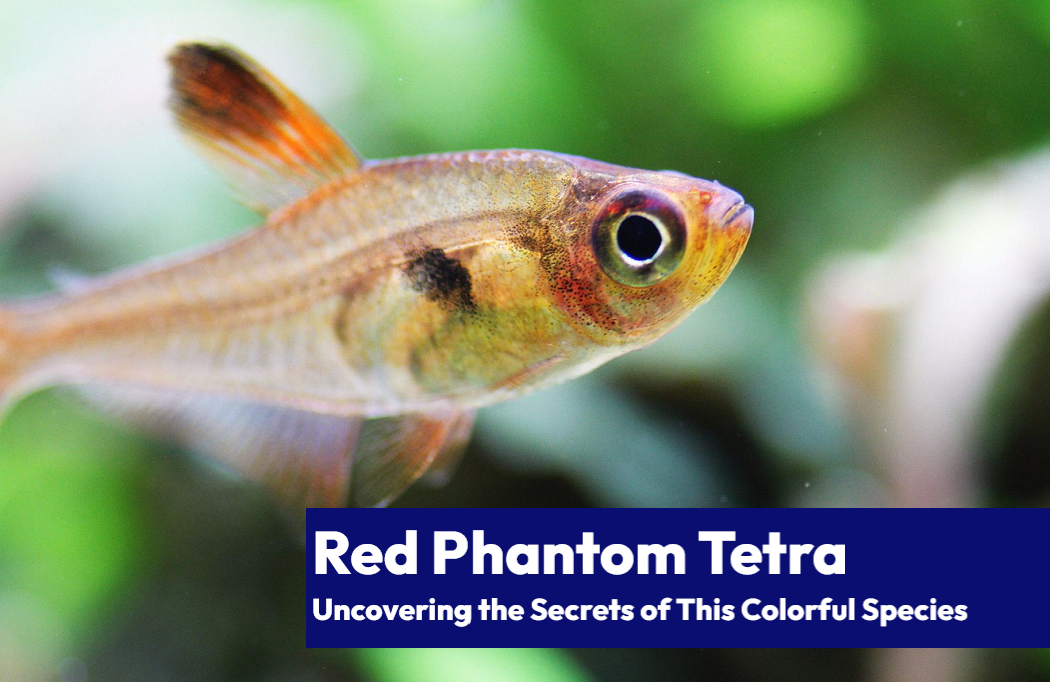These fabulous fish are the perfect performers to take center stage in your aquatic world. Dressed in their scintillating attire of iridescent hues, the Buenos Aires Tetra is like the disco ball of the fish tank world, spreading joy, excitement, and a unique flair wherever they swim.
In this comprehensive guide, we will dive deep into the fascinating world of the Buenos Aires Tetra. We’ll explore their striking appearance, uncover their lifespan and growth patterns, discuss tank requirements and water parameters, and even delve into their behavior and breeding habits. So, without further ado, let the curtain rise, and let’s embark on this spectacular aquatic journey together!
| Care Data | Buenos Aires Tetra |
|---|---|
| Scientific Name | Hyphessobrycon anisitsi |
| Adult Size | 2.5-3 inches (6.3-7.6 cm) |
| Life Expectancy | 5-7 years |
| Water Temperature | 64-82°F (18-28°C) |
| pH Range | 6.0-8.0 |
| Water Hardness | 5-20 dGH |
| Tank Size (Minimum) | 20 gallons (76 liters) |
| Tank Setup | Planted with hiding spaces, open swimming area, and subdued lighting |
| Filtration | Gentle filtration with a sponge filter to avoid disturbing the water flow and protect fry |
| Diet | Omnivorous; a mix of high-quality flake food, live, frozen, and freeze-dried foods, as well as vegetable matter |
| Social Behavior | Peaceful, schooling fish; best kept in groups of at least 6 |
| Tankmates | Compatible with other peaceful community fish, such as other tetras, corydoras, and livebearers. Avoid keeping them with slow-moving or long-finned fish species. |
| Breeding | Egg scatterer; requires a separate breeding tank with fine-leaved plants or spawning mops |
| Level of Care | Beginner to intermediate; fairly hardy but requires a well-maintained environment and a varied diet for optimal health |
Appearance
The body of the Buenos Aires Tetra is primarily silver in color, exhibiting a metallic sheen that reflects a range of iridescent hues, particularly green and blue, under suitable lighting conditions. Running along the lateral line is a faint black stripe, which extends from the operculum to the caudal peduncle. This stripe is less conspicuous in comparison to the prominent black markings observed in other tetra species, such as the Neon Tetra (Paracheirodon innesi).

The fins of the Buenos Aires Tetra are mostly translucent, with the exception of the caudal fin, which often presents a reddish or orange hue at its base. This coloration becomes more pronounced in mature specimens, particularly males. The dorsal fin is adorned with a conspicuous black blotch near its posterior margin, which can serve as an additional distinguishing feature when identifying the species.
Anatomically, the Buenos Aires Tetra possesses an adipose fin, a small, fleshy fin located between the dorsal and caudal fins. This feature is characteristic of fish belonging to the Characiformes order and is hypothesized to play a role in stability and maneuverability in the water. Furthermore, the species exhibits a well-developed lateral line system, which assists in detecting water movement and pressure changes, thereby enabling the fish to navigate and respond to its environment effectively.
Sexual dimorphism in the Buenos Aires Tetra is relatively subtle, with males typically presenting more vibrant colors, a slender body shape, and a slightly elongated dorsal fin. In contrast, females often exhibit a more rounded body, particularly when gravid, as well as slightly subdued coloration. It is also worth noting that the species’ color intensity and overall appearance can be influenced by factors such as water quality, diet, and stress levels.
Lifespan
Buenos Aires Tetras have a relatively long lifespan, usually living for about 5 to 8 years, with proper care and optimal living conditions. Providing a well-maintained and stable environment will help ensure that your fish live a long, healthy, and happy life.
Average Size and Growth Rate
These lively swimmers typically grow to an average size of about 2.5 inches (6.35 centimeters) in length. They have a moderate growth rate, reaching their full size in approximately 9-12 months. This makes them suitable for a wide range of aquarium sizes, from medium to large tanks.
Tank Size
For Buenos Aires Tetras, a 20 gallon (76 liter) tank is the minimum recommended size, but they will thrive even more in larger tanks. They are social fish that prefer to be in groups, so make sure to provide ample space for a school of at least 6-8 individuals. An ideal tank setup will have plenty of swimming space and hiding spots for these active fish to explore.

Water Parameters
Buenos Aires Tetras prefer a slightly acidic to neutral pH level of around 6.0-7.5. They are adaptable to a range of water temperatures, but the ideal range is between 64-82°F (18-28°C). They appreciate water hardness between 5-20 dGH, but can tolerate slightly softer or harder water conditions as well.
Diet
These energetic fish are omnivores, enjoying a balanced diet of high-quality flake food, frozen or live foods such as brine shrimp, daphnia, and bloodworms. Supplementing their diet with small pieces of blanched vegetables like spinach or lettuce will provide additional nutrients and keep them in tip-top shape.
| Food Option | Benefit to Buenos Aires Tetra |
|---|---|
| Flake Food | Specially formulated flake food provides a balanced diet, offering essential nutrients and vitamins to support overall health and boost color vibrancy. |
| Brine Shrimp | Brine shrimp are an excellent protein source that encourages natural hunting behavior, contributing to better digestion and improved muscle development. |
| Daphnia | Daphnia are small crustaceans rich in fiber, which aid digestion and help maintain optimal gut health in Buenos Aires Tetras. |
| Bloodworms | Bloodworms, a protein-rich delicacy, offer a valuable energy source and stimulate the immune system, promoting growth and vitality in Buenos Aires Tetras. |
| Micro Worms | Micro worms provide a live food option that is high in protein and fat, promoting healthy growth and supporting the development of a robust immune system. |
| Mosquito Larvae | Mosquito larvae serve as a natural food source that enhances foraging instincts and provides a varied, protein-rich diet for improved overall well-being. |
| Tubifex Worms | Tubifex worms offer a high-protein treat that aids muscle development and contributes to the maintenance of a strong, active, and healthy Buenos Aires Tetra. |
| Vegetable Pellets | Vegetable pellets supply essential vitamins, minerals, and fiber to promote balanced nutrition and support healthy growth, digestion, and immune function. |
| Spirulina Flakes | Spirulina flakes, rich in antioxidants and essential fatty acids, support immune function, enhance coloration, and contribute to the overall health of Buenos Aires Tetras. |
| Chopped Vegetables | Chopped vegetables such as spinach, lettuce, and zucchini offer a natural source of vitamins and minerals, promoting digestive health and enhancing the overall diet. |
Housing Requirements and What to Put in Their Tank
To create the perfect underwater haven for your Buenos Aires Tetras, include a mix of live plants, rocks, and driftwood to mimic their natural habitat. Be sure to provide open swimming spaces and hiding spots for them to explore and take shelter in. A gentle current from a well-placed filter will also help to mimic the flowing waters of their native environment.
Behavior and Temperament
Buenos Aires Tetras are active and social fish that love to swim in schools. They are generally peaceful and get along well with other similarly-sized, non-aggressive fish species. However, they have been known to nip at the fins of slow-moving or long-finned tankmates. As long as they are kept in a suitable environment and in a sizable group, their energetic and playful nature will add life and excitement to your aquarium.
Breeding
Although the process can be slightly challenging, with proper preparation, attention to detail, and a bit of patience, you can successfully breed these vibrant fish in your home aquarium. In this comprehensive part of our guide, we will walk you through the specific steps to breed Buenos Aires Tetras, ensuring you have all the information you need for a successful breeding experience.
Step 1: Prepare a Separate Breeding Tank
- Set up a separate breeding tank with a minimum capacity of 10 gallons (38 liters) to provide a controlled and stress-free environment for the breeding pair.
- Equip the tank with a sponge filter for gentle water circulation and biological filtration. Sponge filters are preferred because they minimize the risk of sucking up the delicate fry.
- Add a heater to maintain a consistent water temperature of 77-82°F (25-28°C), slightly warmer than their usual range, to encourage breeding behavior.
- Use a soft, fine-grained substrate like sand or small, smooth pebbles.
- Include plenty of fine-leaved plants, such as Java moss or spawning mops, which will serve as ideal locations for the female to deposit her eggs.
- Keep the lighting subdued or dim, as Buenos Aires Tetras prefer low-light conditions for breeding.
Step 2: Condition the Breeding Pair
- Choose a healthy, mature pair of Buenos Aires Tetras, ideally at least a year old. Males are typically more vibrant in color and have a more streamlined body shape, while females tend to be plumper and have a rounder belly.
- Isolate the selected pair in the breeding tank.
- Condition the breeding pair for 1-2 weeks by feeding them a high-quality diet of live or frozen foods such as brine shrimp, daphnia, and bloodworms. This helps to enhance their health and ensure they are ready to breed.
Step 3: Spawning
- Monitor the breeding pair for signs of courtship behavior, such as the male swimming alongside the female and flaring his fins.
- When the female is ready to spawn, her belly will appear round and full of eggs.
- During spawning, the male will wrap himself around the female, and she will release her eggs while he simultaneously fertilizes them.
- The fertilized eggs will sink to the bottom of the tank or attach to the fine-leaved plants or spawning mops.
- Buenos Aires Tetras can lay between 300 and 2,000 eggs in a single spawn.
Step 4: Post-Spawning Care
- After the spawning process is complete, immediately remove the adult fish from the breeding tank, as they may consume the eggs.
- Maintain the water temperature, quality, and low-light conditions in the breeding tank.
- The eggs will hatch in approximately 24-48 hours, revealing tiny, transparent fry.
Step 5: Raising the Fry
- For the first few days, the fry will feed off their yolk sacs. Once they become free-swimming, usually within 3-4 days, begin feeding them a diet of infusoria or liquid fry food.
- As the fry grow, gradually introduce them to finely crushed flake food and newly hatched brine shrimp.
- Perform regular water changes, ensuring you remove debris and uneaten food from the tank to maintain water quality.
- Monitor the fry’s growth and development, ensuring they receive adequate nutrition and space to grow.
Step 6: Gradual Transition to a Community Tank
- After 4-6 weeks, when the fry have reached a size of about 0.5 inches (1.27 cm) and are less vulnerable to predation, you can start preparing them for the transition to a community tank or grow-out tank.
- To avoid stressing the fry, introduce them to the new tank’s water parameters gradually. Over the course of a week, perform small water changes in the breeding tank, replacing the water with water from the community tank or grow-out tank.
- Once the fry are acclimated to the new water parameters, use a soft mesh net to gently transfer them to the community tank or grow-out tank.
- Keep a close eye on the fry during the first few days in their new environment, ensuring that they are adapting well and not being harassed by larger fish.
Step 7: Ongoing Care
- As the young Buenos Aires Tetras continue to grow, maintain a balanced diet, consisting of high-quality flake food, live or frozen foods, and vegetable matter.
- Ensure the water parameters in the community tank or grow-out tank remain stable, with a temperature of 64-82°F (18-28°C), a pH of 6.0-8.0, and a hardness of 5-20 dGH.
- Perform regular water changes and tank maintenance to keep the water quality high and create a healthy environment for the growing fish.
Tankmates
Ideal tankmates for Buenos Aires Tetras include other peaceful tetra species, rasboras, corydoras catfish, and peaceful livebearers like platies and mollies. Avoid keeping them with slow-moving or long-finned species, as they may be prone to fin-nipping. Keeping them in a sizable group will help minimize aggressive behavior and ensure a harmonious community aquarium.
Diseases and Illnesses
Ich (Ichthyophthirius multifiliis)
Ich is a common parasitic disease that presents as small white spots on the fish’s body, fins, and gills. To treat ich, consider using products like API Super Ick Cure or Seachem ParaGuard. These medications help eliminate the parasites and prevent further infection by targeting the free-swimming stage of the parasite.
Fin Rot
Fin rot is a bacterial or fungal infection that causes the fish’s fins to appear frayed or disintegrate. To combat fin rot, use a medication like API Fungus Cure or Seachem Kanaplex. These treatments are effective in targeting the infection’s source and promoting fin regeneration and healing.
Geography and Range
The Buenos Aires Tetra is native to the freshwaters of South America, primarily inhabiting the Paraguay, Paraná, and Uruguay River basins. Their natural range stretches across Argentina, Brazil, Paraguay, and Uruguay. These adaptable fish are typically found in slow-moving to moderately flowing rivers, streams, and floodplain lakes, where they congregate in large schools.

In their natural habitat, the Buenos Aires Tetra prefers areas with dense aquatic vegetation and a substrate of fine sand or silt. The waters they inhabit are often stained with tannins from decaying leaves and other organic matter, giving the water a tea-like appearance. This environment provides ample hiding spots, food sources, and protection from predators.
Discovery and Classification
The Buenos Aires Tetra was first described by Austrian ichthyologist Carl H. Eigenmann in 1907. He named the species Hyphessobrycon anisitsi in honor of Dr. Paul Anisits, a Hungarian naturalist and physician who collected specimens for Eigenmann during his South American expeditions.
Eigenmann’s work laid the foundation for future studies on the Buenos Aires Tetra and its relatives. Over time, more species of the Hyphessobrycon genus have been discovered, and the group now contains over 100 recognized species. The classification and taxonomy of this genus are still a subject of ongoing research, as new species continue to be discovered, and the relationships among them are further refined.
Notable Ichthyologists
In addition to Carl Eigenmann, other notable ichthyologists have contributed to our understanding of the Buenos Aires Tetra and its relatives. One such figure is Dr. Stanley H. Weitzman, a highly respected American ichthyologist who specialized in the study of neotropical fishes, particularly the Characiformes order, which includes tetras. His work on the systematics and biogeography of these fish has been instrumental in shaping our knowledge of their taxonomy and natural history.
Another key figure is Dr. Jacques Géry, a French ichthyologist who made significant contributions to the study of characins, including the Buenos Aires Tetra. Géry’s work helped to clarify the relationships among various Hyphessobrycon species and provided valuable insights into their ecology and behavior.
Taxonomy
| Taxonomic Rank | Name |
|---|---|
| Kingdom | Animalia – animals |
| Subkingdom | Bilateria |
| Infrakingdom | Deuterostomia |
| Phylum | Chordata – chordates |
| Subphylum | Vertebrata – vertebrates |
| Infraphylum | Gnathostomata |
| Superclass | Actinopterygii – ray-finned fishes |
| Class | Teleostei |
| Superorder | Ostariophysi |
| Order | Characiformes – piranhas |
| Family | Characidae – American characins, characins, tetras |
| Genus | Hyphessobrycon Durbin in Eigenmann, 1908 |
| Species | Hyphessobrycon anisitsi (Eigenmann in Eigenmann and Ogle, 1907) |
Conclusion
In conclusion, the Buenos Aires Tetra is a dazzling and energetic addition to any community aquarium. Their vivacious personalities, shimmering colors, and playful nature make them a joy to watch as they swim and interact with their tankmates.
By providing them with a suitable environment, a balanced diet, and appropriate tankmates, you will create a thriving underwater world that will captivate and delight you for years to come.

Tim Priest, a renowned aquarium expert with over 15 years of experience in aquatic gardening and fish education, is dedicated to helping enthusiasts create stunning and thriving aquatic environments. As the founder of LearnTheAquarium.com, Tim shares his wealth of knowledge, passion, and expertise through engaging articles, educational resources, and personalized advice.
Discover the secrets to creating captivating underwater landscapes and maintaining healthy aquatic ecosystems. Join Tim on an exciting journey and let your aquarium adventure begin!

